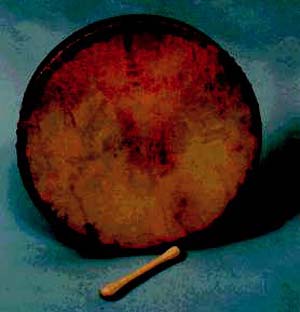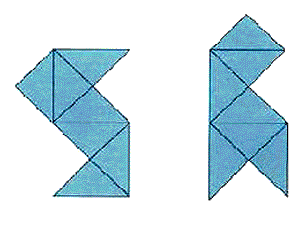| 2004 |

|
YEAR BOOK |
Dublin Institute for Advanced Studies
|
You can hear the shape of a Bodhrán
|

Until recently, gravity remained aloof from the other forces by resisting all attempts to unify it with the quantum world. In general relativity it is understood in terms of geometry with the curvature of space and time giving rise to the force of gravity. Our understanding of the other forces of nature has geometrical aspects: we do not understand them in purely geometrical terms. The new theory that seems to provide a unified understanding of all the forces of nature is variously called string theory or M-theory.
In The Irish Scientist 2003 Year Book ( page 53 ), Professor Werner Nahm briefly summarised some aspects of our understanding of particle physics and string theory and closed his contribution by wondering 'do we need to invent a new kind of geometry?'.
The interchange of ideas between geometry and physics has played a profound role in the developments of both. As a result, there are many ways of viewing geometry. One of the more intriguing was presented by Mark Kac in the form of the question 'Can one hear the shape of a drum?'. More precisely, if you are given the pure tones emitted by a drum (i.e. eigenvalues of the Laplacian) can one tell the exact shape of the drum? The answer, as Kac guessed, is that the pure tones are not quite enough. The surprise, however, is how close this limited information comes to specifying the geometry uniquely.
Of course, to a physicist and surely to a musician the notion that all one hears are the pure tones is absurd – anyone who ever listened to good old rock and roll (or even Beethoven) knows that one also hears the intensity. It can also be fun to make how you play dependent on how loud a fellow musician plays.
The loudness or intensity can be thought of as a function on the drum, and making one sound depend on the intensity of another can be promoted to the multiplication law of functions. What we now know is that these three bits of information (i.e. the set of pure tones, the ability to measure the intensity of a given tone, and the tones with their intensities that result when one multiplies pure tones), is one way of precisely specifying the geometry.

In fact, one could then revisit Kac's question and observe that, if space were noncommutative, one could even hear the noncommutativity. There are intriguing suggestions that this new geometry may well play a role in our understanding of the forces of nature.
The School of Theoretical Physics at DIAS is active in these questions, and part of an EU Network on Noncommutative Geometry.
Contact: Denjoe O'Connor, Senior Professor,
School of Theoretical Physics,
Dublin Institute for Advanced Studies,
10 Burlington Road, Dublin 4.
Email: [email protected]